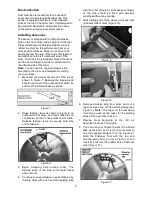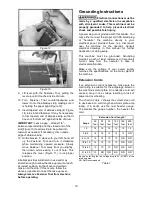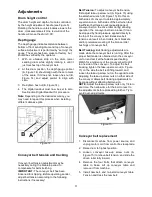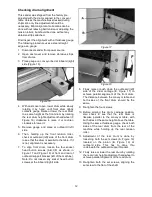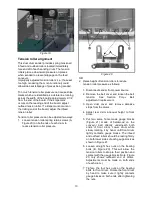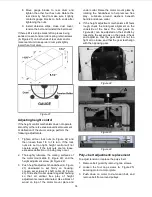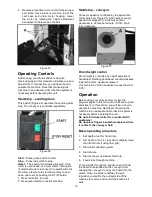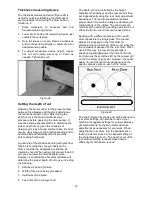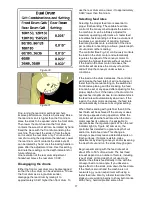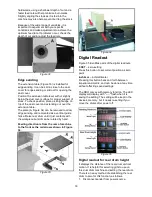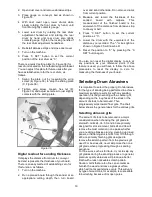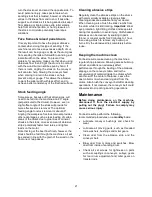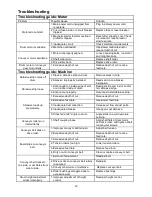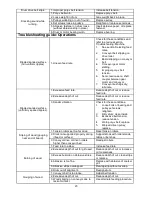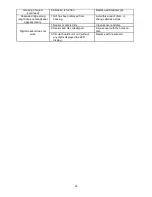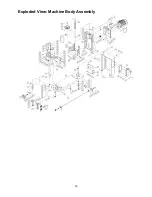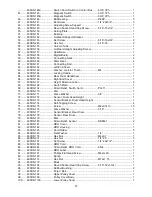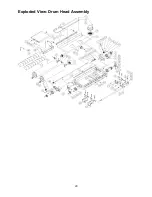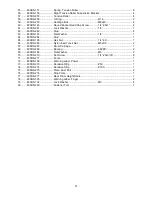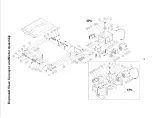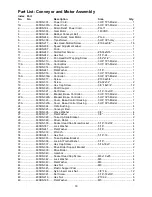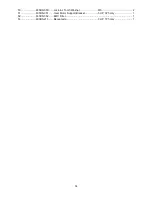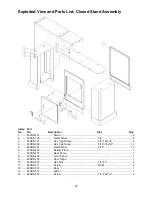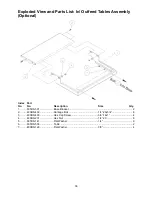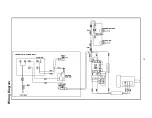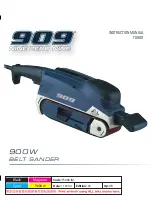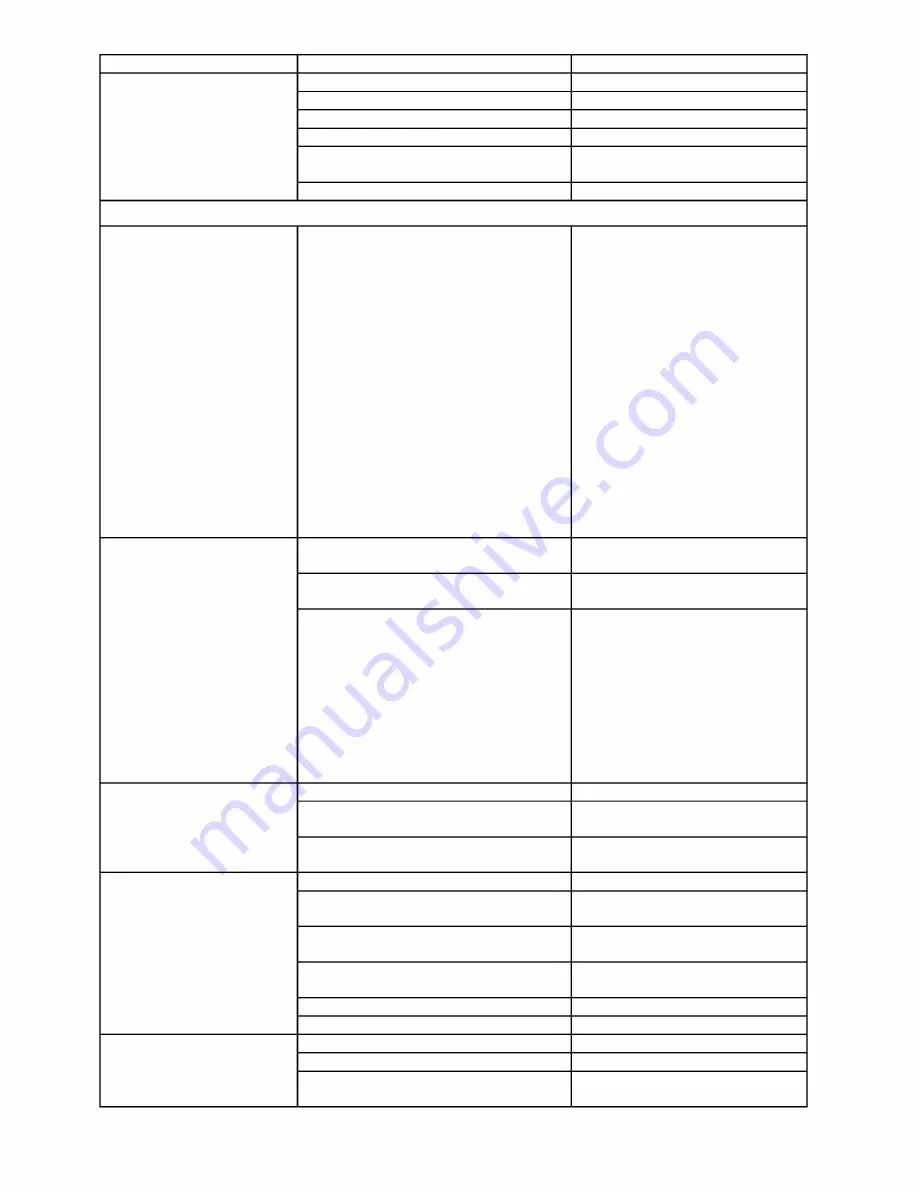
23
Drum drive belt slips.
1. Improper poly-v belt tension.
Increase belt tension.
1. Poly-v belt worn.
Replace poly-v belt.
2. Loose weight in drum.
Glue weight back in place.
3. Pulleys wobbling or out of round.
Replace pulley.
4. Set screws loose in pulleys.
Retighten or replace set screws.
5. Abrasive fastener on drum loose
(without abrasive strip in place).
Insert abrasive paper, or replace
fastener.
Knocking sound while
running.
6. Drum or motor bearing worn.
Replace bearing.
Troubleshooting guide: Operations
Rippled sanded surface
(non-uniform ripples).
1. Uneven feed rate.
Check for these conditions and
refer to previous section,
Troubleshooting: Machine.
1.
See section Selecting feed
rates.
2.
Conveyor belt slipping on
drive roller.
3.
Board slipping on conveyor
belt.
4.
Conveyor gear motor
stalling.
5.
Improper poly-v belt
tension.
6.
Set screw loose on shaft
coupler between gear
motor and conveyor.
7.
Conveyor bushings dry;
lubricate.
1. Excessive feed rate.
Reduce depth of cut or reduce
feed rate.
2. Excessive depth of cut.
Reduce depth of cut or reduce
feed rate.
Rippled sanded surface
(uniformly spaced ripples).
3. Sander vibration.
Check for these conditions:
1.
Loose bolts or bearing and
pulley set screws;
retighten.
2.
Dirty drum; clean inside.
3.
Excessive belt tension;
reduce tension.
4.
Worn poly-v belt; replace.
5.
Warped driven pulley;
replace.
1. Tension rollers set too far down.
Reset tension rollers.
2. Stock not supported properly during
infeed or outfeed.
Support stock with roller stands,
tables or benches.
Sniping of wood (gouging
near end of board).
3. Conveyor drive or driven rollers
higher than conveyor bed.
Readjust rollers.
1. Feed rate too slow.
Increase feed rate.
2. Excessive depth of cut for grit used.
Reduce depth of cut or increase
grit coarseness.
3. Excess build-up on abrasive strips.
Reduce depth of cut; clean strips
or replace.
4. Abrasive is too fine.
Replace with abrasive of coarser
grit.
5. Abrasive strips overlapped.
Rewrap strip without overlap.
Burning of wood.
6. Drum out of alignment.
Realign drum.
1. Conveyor belt is too loose.
Adjust belt tension.
2. Excessive depth of cut.
Reduce depth of cut.
Gouging of wood.
3. Wood slipping on conveyor due to
lack of contact.
Use alternate feeding procedure.
Summary of Contents for 913003
Page 25: ...25 Exploded View Machine Body Assembly...
Page 29: ...29 Exploded View Drum Head Assembly...
Page 32: ...32 Exploded View Conveyor and Motor Assembly 33 1Ph...
Page 39: ...39 Notes...

